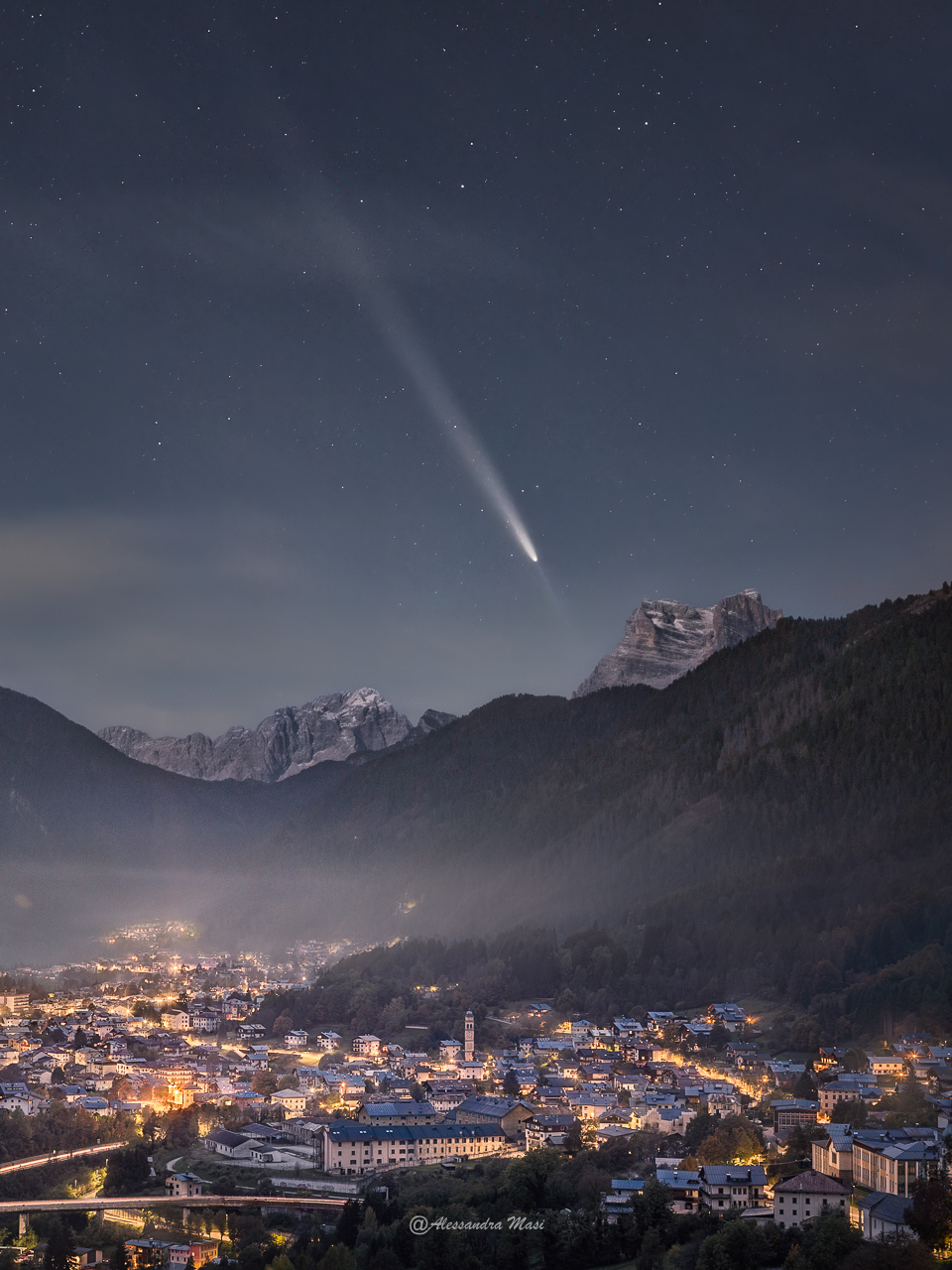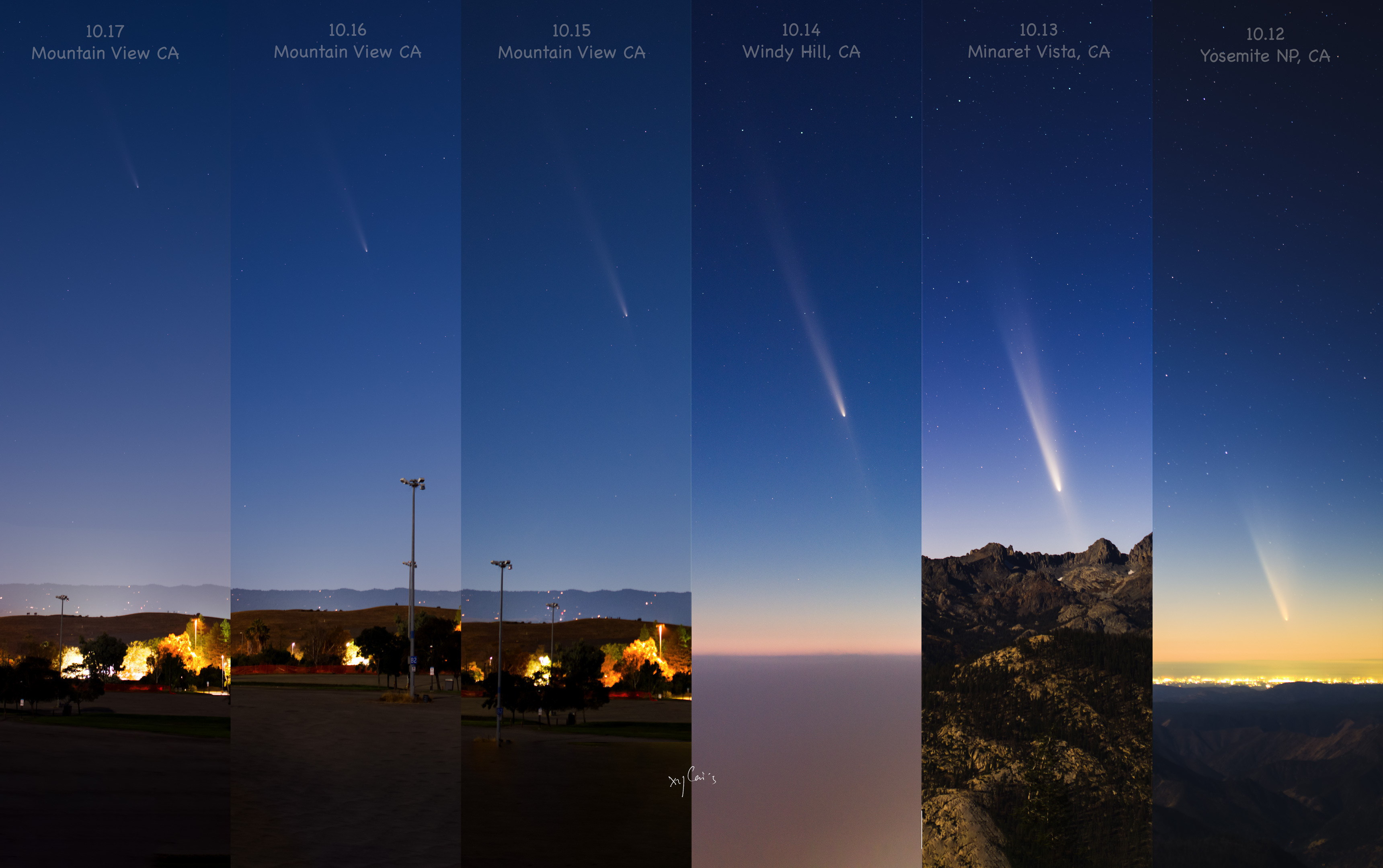
A Kilometer High #Cliff on #Comet #Churyumov-Gerasimenko
#Astronomy #Picture of the Day
12 Likes
4 Comments
2 Shares





A fireball streaked by while Yasutaka Saika was taking a photograph of Comet Tsuchinshan–ATLAS, producing this beautiful, accidental celestial alignment.
Captured on Oct 24 from Tereske, Hungary.
https://www.facebook.com/yasutaka.saika/ #space #science #astronomy #photography
#photo #comet
https://vmst.io/@WestportObservatory/113388513721689898 WestportObservatory@vmst.io - THE SUN JUST SWALLOWED A COMET: RIP Halloween Comet. Today, ATLAS (C/2024 S1) fell into the sun and did not survive. Using a coronagraph to create an artificial eclipse, the Solar and Heliospheric Observatory (SOHO) recorded the comet's final moments. https://Spaceweather.com has the obituary. ¯(ツ)/¯


https://astrodon.social/@sjastronomy/113314191726995255 sjastronomy@astrodon.social - Rogelio Bernal Andreo captured this image of #CometC2023A3 on 13 October at around 19:35 from San Luis Reservoir, California. He used a Canon 70-200mm lens @ 145mm, and a Sony a7s camera. No tracking. #Astrophotography
Visit his website: http://deepskycolors.com

'ANTI-TAIL' OF #COMET TSUCHINSHAN-ATLAS: Comet tails are supposed to point away from the sun. Yesterday, Nick James of the British Astronomical Association photographed a tail pointing in the opposite direction. It's the narrow 'anti-tail' emerging from the head of Comet Tsuchinshan-ATLAS:
"Stretching down to the horizon, the anti-tail looked amazing in this image I took from 2100m on La Palma," says James.
What created this backwards tail? Yesterday, Earth passed through the orbital plane of the comet. At the moment of crossing, the sharp edge of the comet's fan-shaped dust tail appeared to point toward the sun. It's an optical illusion.
The anti-tail will fade in the days ahead, even as the comet itself remains a gorgeous sight in the evening sky. Look west about 40 minutes after local sunset. The comet is easy to find using binoculars and, then, once found, is equally easy to see with the unaided eye. The comet's long tail (the real tail) stretches more than 10 degrees above the western horizon, remaining visible for almost an hour after the head of the comet sets


#Comet Tsuchinshan-ATLAS
Taken by Dirk Ewers on October 12, 2024 @ on air, #Germany
On flight from Madrid to Franfurt/M. Tsuchinshan-ATLAS was an easy naked eye object. The comet could be observed for nearly one hour and nice images were possible with high iso and short exposure times. The tail did rotate from around 4 o'clock to 11 o'clock in only three days, so now it's a good observing time for this comet, again ;-) 70-200mm f2.8 + ISO 16000 1/50s detailed image : composit of 6 exposures
Photographer's website: